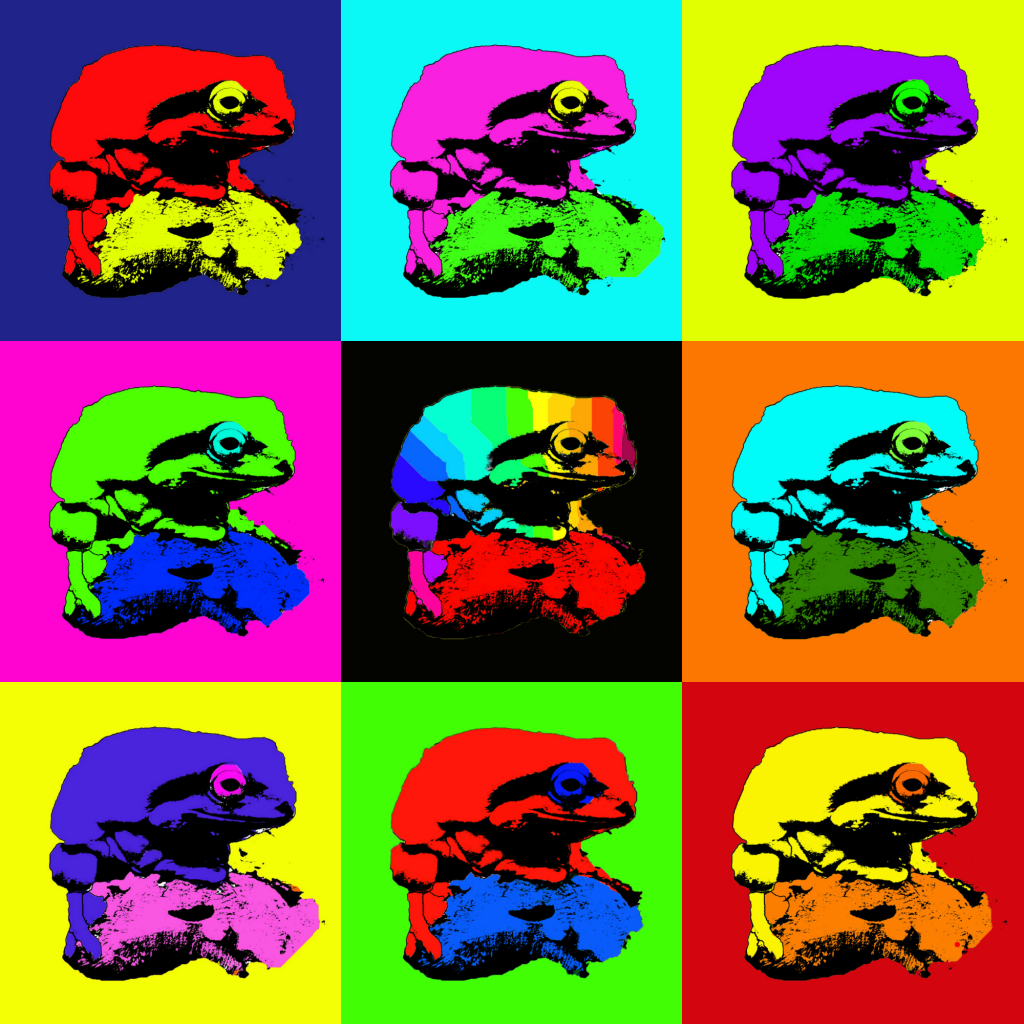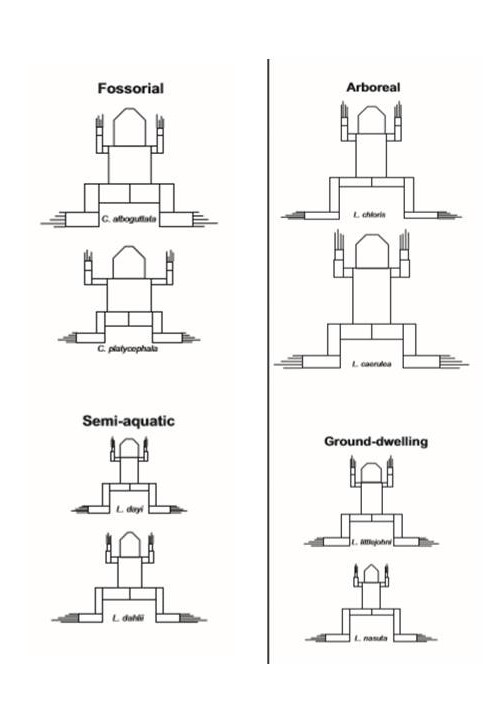
Convergent evolution. Oh gosh, you might be thinking, here we go again, another lesson on convergent evolution. If you’ve been in an evolution class, you probably know the definition: the independent origin of similar phenotypes in distantly related species. You most likely spent a whole lecture on the topic or have encountered numerous papers on the subject. With so much emphasis put on convergent evolution, it must be an important concept in evolutionary biology. But why does it matter? What is its importance?
There are various reasons that explain its importance, but the main reason may underlie with scientists’ desire to understand the processes and patterns that shape and determine morphological diversity and evolution observed among species. In being able to identify repeated patterns of morphological evolution across species-rich diversification, scientists have been able to examine underlying environmental factors that might have promoted the evolution of particular morphotypes (Vidal, et al. 2015). Moreover, environmental factors can drive diversification within a clade (Losos et al., 2007). However, similar selective pressures can drive enhancement of traits, leading to convergence among species between distantly related clades. Thus, it is common to observe convergent traits in species from different lineages that share a common ecotype. Such an example can be seen with body size and shape difference as an adaptation to environmental niche in Anoles of the Greater Antilles in the Caribbean (Pinto et al., 2008). Evidence was found for convergence among members of the habitat specialist types for each of the datasets they examined.
However, this blog post is not meant to discuss the various examples of convergent evolution, rather it is meant to uncover if convergent evolution drives morphological convergence of body shape in Australian frogs. Amphibians are interesting subjects of study when it comes to convergent evolution and ecotype diversification, as they are thought to experience more environmental constraints than most vertebrates, due to evaporative water loss in terrestrial habitats, i.e. forest or desert (Buckley et al, 2012). Despite this, they have successfully diversified into forms that can cope with an astonishingly wide array of habitat types through morphological, behavioral and physiological adaptations. Frogs and toads generally display a tight correlation between body shape patterns and habitat use or environmental niche. Thus, convergent evolution in morphotypes should be common across diverse lineages that share similar ecotypes, something that has been rarely tested at the transcontinental level and across multiple species of the same type of animal (Vidal et al, 2015).
This initiated the study done by Vidal et al. (2015), where they were interested in testing for the existence and strength of convergent evolution in the morphology of frogs at the level of the entire continent of Australia. Australia comprises many diverse habitats, ranging from hot, dry deserts to wet rainforests, and has an array of isolation and aridification history. This combination is great for comparative analyses on a broad scale. These researchers examined morphological, environmental, and physiological data on 84 Australian hylid (tree frogs) in an evolutionary context and categorized them into ecotypes. From this, the researchers focused their study on trying to answer four questions:
- Are there body size and shape differences among different clades and ecotypes?
- Do species from the same ecotype show similar morphological patterns, even across different clades and families?
- What is the cause of these body shape similarities?
- Do physiological traits vary among species relative to body shape and environmental niche?
They began their quest to answer these questions by collecting data on morphological variation, evaporative water loss, and habitat use in the four main ecotypes they categorized–arboreal, ground-dwelling, semi-aquatic and fossorial– across all species and lineages of Australian hylid frogs. They then compared this data with morphological and environmental patterns found in the radiation of Australian myobatrachids frogs from another study, using phylogenetic comparative methods (Vidal et al., 2015). Further, they quantified the strength of morphological convergence at two levels: 1) between fossorial myobatrachid and hylid frogs and 2) in each ecotype within the hylids. The researchers found evidence to answer each question:
- Are there body size and shape differences among different clades and ecotypes? No. Certain body shapes evolved multiple times within certain clades. On the other hand, looking at a finer scale, i.e. species within ecotypes, it was discovered that there was a strong evolutionary relationship: species subtly conform to particular shapes. This was especially evident between fossorial species in the different ecotypes.
- Do species from the same ecotype show similar morphological patterns, even across different clades and families? Yes. Body shape patterns roughly matched each ecotype, and this correlation was strongest in the fossorial species, which displayed non-webbed feet, more pointed snouts and proportionally shorter limbs. This morphological type was also observed in all co-distributed burrowing myobatrichid frog species: body shape patterns among fossorial species from different families were similar (Fig. 1), when compared to closely related species from different ecotypes
- What is the cause of these body shape similarities? It’s hard to determine one specific cause. From Videl, et al, (2015) results, it was suggested that “there was a tendency for morphological convergence between fossorial tree frogs and myobatrachid back burrowers sharing the same ecotype”. Moreover, it was suggested that ecotype diversification plays an important role in shaping morphological traits in Australian tree frogs.
- Do physiological traits, vary among species relative to body shape and environmental niche? Not exactly. Cutaneous resistance of tree frog species was highly variable. No clear phylogenic, morphological, or environmental correlation was found. However, a correlation existed between ecotype and resistance to evaporative water loss, with arboreal species displaying the highest resistance to water loss and aquatic and fossorial species displaying the lowest.

Overall, the results provide evidence that illustrate how adaptation to different ecological niches plays a crucial role in morphological evolution, boosting phenotypic diversity within a clade. Ultimately, as the researchers coined it, “morphotype matches ecotype’ (Vidal et al, 2015).
But how can this study be taken further? It would be interesting to look at more in depth what other factors might be facilitating adaptation to each ecotype looked at in this study. Do species with a more generalized or conserved body shape display a wider array of behavioral tactics than other species? Additionally, looking at how frog species in Australia have adapted resistance (or if adaptation has occurred) to the chytrid fungus and if these potential adaptations have undergone convergent evolution, would be interesting to consider. Chytridiomycosis, a disease caused by the zoosporic chytrid fungus Batrachochytrium dendrobatidis (Bd), is on the rise. One hypothesis is that the origin of Bd was in Australia; however recent evidence places the origin in Africa (Weldon, et al. 2004). With an increase in the chytrid fungus, major die offs have occurred in Australia that has caused the extinction of four species and has led to a dramatic decline of at least ten others (Chytridiomycosis, 2013). How have Australian frogs adapted or have they adapted? Are their similar adaptations across different clades or is adaptation similar among species sharing the same ecotype? Learning about resistance adaptations and how they evolved, can better help the understanding of the dynamics of the chytrid fungus and potentially aid in treating the disease. The discovery of immunological resistance to this pathogenic fungus can provide for an exciting fundamental breakthrough that offers hope and a critical tool for dealing with a global epidemic affecting wild amphibian populations.
Additional information:
Want to check out convergent evolution and ecotype diversification for yourself? Check out the original Vidal et al. 2015 paper here.
Still interested in reading further? Check out this paper that discusses convergent evolution and morphological diversification with Anolis lizards in the Caribbean.
Glossary:
Aridification: the process of a region becoming increasingly dry
Clade: or a group of organisms consisting of a common ancestor and all of its descendents
Ecotype: genetically distinct geographic population or race within a species adapted to specific environmental conditions
Morphotypes: any group of different types of individuals of the same species in a population; a morph
Morphological (Morphology): the study of the form and structure of organisms and their specific structural features
Myobatrachids: frogs specifically native to Australia
Phylogenetic: of or relating to phylogeny, or the evolutionary history of a kind of organism; based on natural evolutionary relationships.
Citations:
Buckley, L.B., Hurlbert, A.H. & Jetz, W. (2012). Broad-scale ecological implications of ectothermy and endothermy in changing environments. Glob. Ecol. Biogeogr. 21: 873— 885. DOI: 10.1111/j.1466-8238.2011.00737.x
Chytridiomycosis (Amphibian chytrid fungus disease). (2013). Retrieved March 22, 2016, from https://www.environment.gov.au/biodiversity/invasive-species/publications/factsheet- chytridiomycosis-amphibian-chytrid-fungus-disease
Losos, J.B. 1992. The evolution of convergent structure in Caribbean Anolis communities. Syst. Biol. 41: 403—420. DOI: 10.1093/sysbio/41.4.403
Pinto, G., Mahler, D. L., Harmon, L. J., & Losos, J. B. (2008). Testing the island effect in adaptive radiation: rates and patterns of morphological diversification in Caribbean and mainland Anolis lizards. Proceedings of the Royal Society of London B: Biological Sciences, 275(1652), 2749-2757. DOI: 10.1098/rspb.2008.0686
Vidal’GarcÃa, M., & Keogh, J. S. (2015). Convergent evolution across the Australian continent: ecotype diversification drives morphological convergence in two distantly related clades of Australian frogs. Journal of evolutionary biology, 28(12), 2136-2151. DOI: 10.1111/jeb.12746
Weldon, C., du Preez, L. H., Hyatt, A. D., Muller, R., & Speare, R. (2004). Origin of the Amphibian Chytrid Fungus. Emerging Infectious Diseases, 10(12), 2100—2105. https://doi.org/10.3201/eid1012.030804.
